Planting and caring for Kampsis in the middle lane
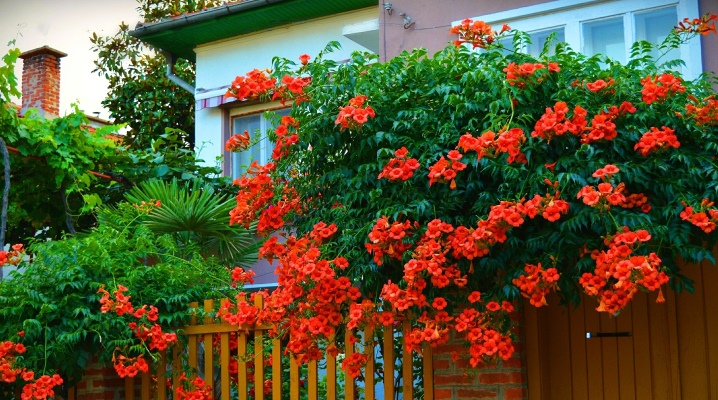
With the arrival of spring, every summer resident and owner of a private house begins to think about what flowers to plant the territory with. Today there are many plants that can become a real decoration of the site. One of the most popular is kampsis, which can be used for landscaping, hedging and other design solutions. It is about this plant that will be discussed in this article. Let's talk about how to properly grow Kampsis in the middle lane.
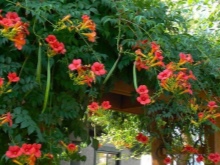


Suitable species
So, before determining the varieties of this plant suitable for growing in the middle lane, let's talk a little about it itself, its characteristics, origin. Campsis or, as it is also called, begonia refers to deciduous woody vines. He is a representative of the Begoniev family. The homeland of the plant is considered to be China and North America. On the territory of Europe, the flower appeared in the 17th century and began to be actively cultivated.


Campsis is characterized by:
- fast growth, strong and developed rhizome, which can grow several meters around the base of the flower;
- smooth and green bark of young shoots;
- oval or ovoid leaves with jagged edges and a glossy leaf surface;
- numerous inflorescences throughout the summer;
- tubular flowers, the diameter of each of which can reach 8 centimeters;
- a variety of shades.



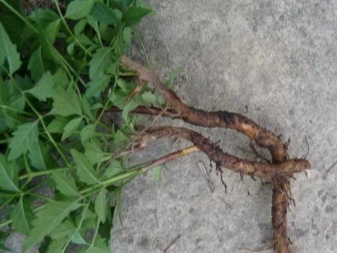
Now you can go to the description of the varieties that can be grown, for example, in the Moscow region. Unfortunately, the climatic conditions inherent in this territory exclude the possibility of growing all types and varieties of Kampsis. The most suitable campsis species that can be grown in the middle lane are as follows.
- Hybrid. Such a plant can reach a height of 8 meters. It is characterized by the presence of rough ovoid leaves of a dark green color, as well as large tubular pink-yellow flowers.
This species copes well with temperature changes and is not afraid of frost.
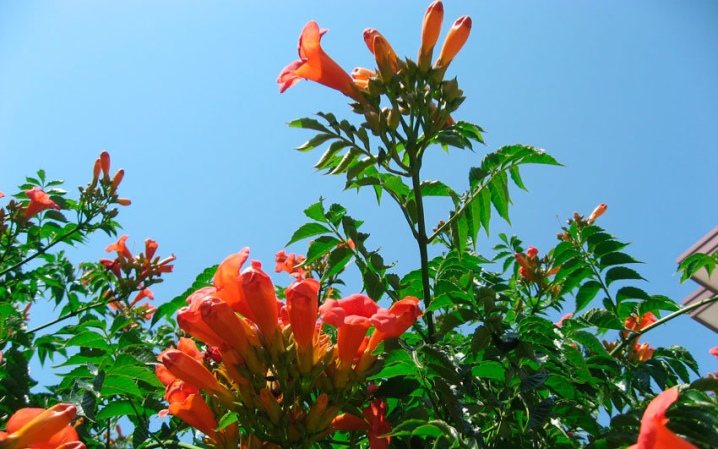
- Rooting. It is a branchy plant with aerial roots. Its foliage is rough, gray-green in color. The size of the flowers is small, on average 7 centimeters, but their color is incredibly beautiful, pink-purple, with a golden tint. The plant is frost-resistant, not afraid of low temperatures and extremes.
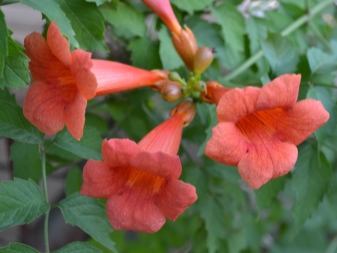
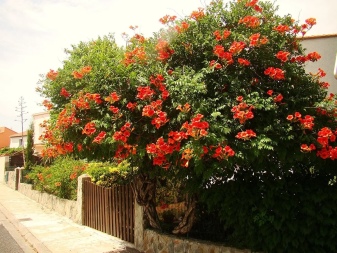
- Flamenco. A perennial plant, the height of which can reach from 2 to 5 meters. It is also worth noting that this type of kampsis is quite voluminous, it needs a lot of space for comfort and good growth. It is characterized by oval-shaped leaves with jagged edges and bright purple-red petals. The flower is very hardy.
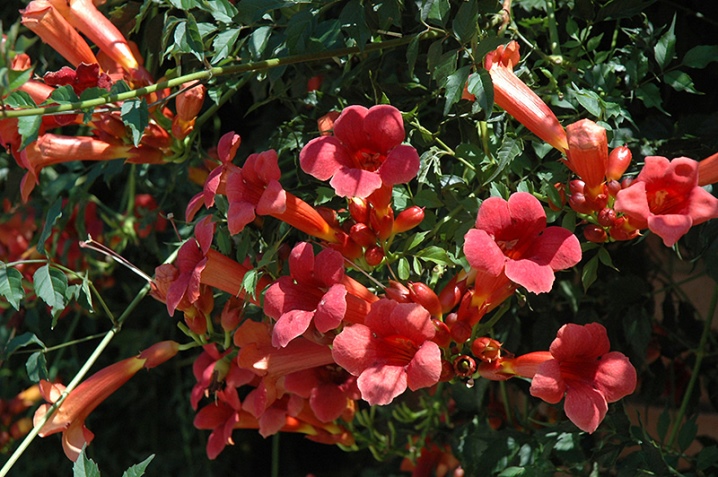
- Flava. This is a large-leaved species of kampsis, which can be 7 meters high. It is characterized by the presence of an airy, well-developed root system, bright green foliage up to 15 centimeters long and incredibly beautiful flowers up to 5 centimeters in diameter. The color can be yellow-orange or red-gold.
This type of kampsis is one of the most frost-resistant, it can easily survive even the coldest and snowiest winter.
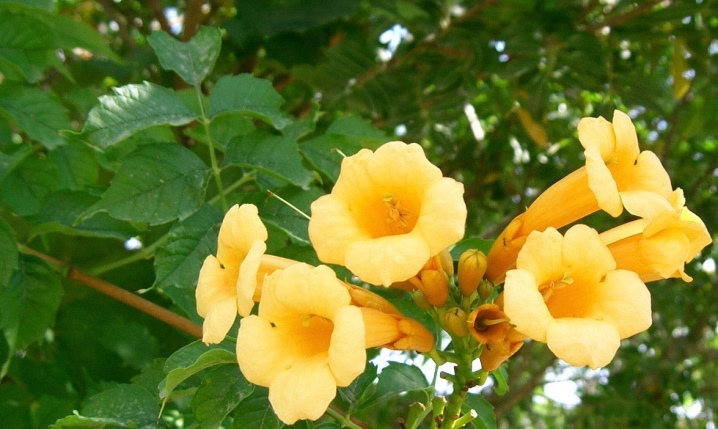
There are cases when large-leaf (Chinese) kampsis is grown in the middle lane, but the liana rarely takes root in this area, since its temperature limit is 18 ºС below zero.
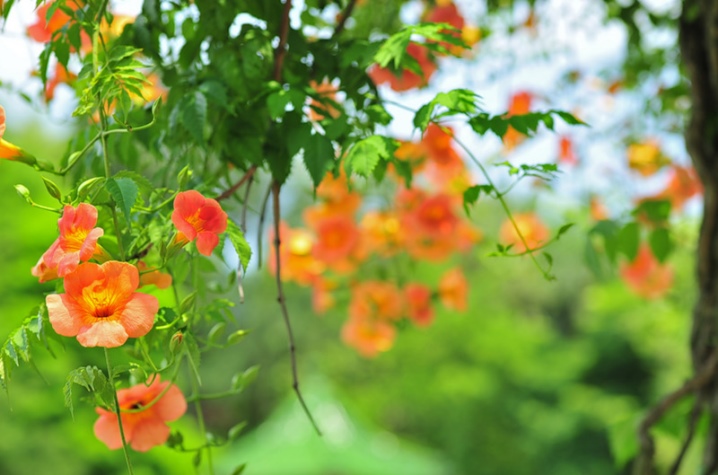
Landing features
Campsis, like any other plant, needs proper care and planting. Experts and experienced summer residents say that the ideal time for planting vines is May and early June. You must adhere to the following rules and sequence of actions.
- The planting hole should be prepared in advance, it is advisable to dig it out in the fall. If such an opportunity did not present itself, then at least 2 weeks before landing. This manipulation is necessary so that the soil does not sink.
- The size of the pit should correspond to the following parameters: depth - 50 centimeters, width - 60 centimeters.
- To prevent the vine from growing, you need to install slate or metal sheets near the pit. These fences are dug into the ground to a depth of at least 70 centimeters.
- Install also supports near the pit, preferably metal, along which the plant will grow.
- Next, you need to prepare the soil mixture. Take the soil, you can take the one that was taken out of the pit, and mix it with 5 kg of humus and complex mineral fertilizers. The amount of fertilizer required must be indicated on the original packaging.
- At the bottom of the pit, it is worth putting drainage - broken brick, stone and a small amount of gravel. A little prepared soil is poured over it.
- Next, a seedling is installed. It is very important to spread the root system well. Water well.
- Pour out the rest of the soil and tamp lightly.
- Mulch with peat or compost.
- At the last stage, the seedling is tied to a support.
As you can see, planting kampsis is not much different from planting other plants, which are of the vines type.
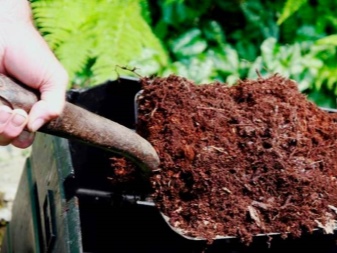
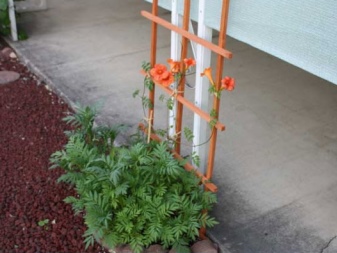
Care rules
In order for kampsis to grow well and quickly, and so that the flowering is abundant and beautiful, you need to adhere to the rules of care.
- Watering. The plant loves water. When it's hot outside, watering should be more abundant and frequent. But do not let the water in the soil stagnate.

- Illumination of the site. The flower needs a lot of light. That is why when choosing a site for planting, you need to take into account that the sun's rays fall on it. The place should be open and not shaded.
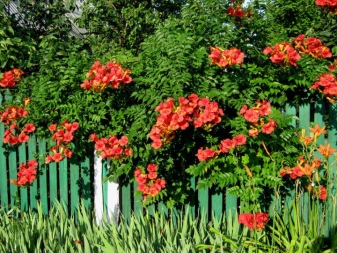

- Temperature conditions. This vine is a southern plant that needs warmth and sun. It was experimentally determined that in the middle lane the plant grows more slowly. Protect kampsis from drafts.
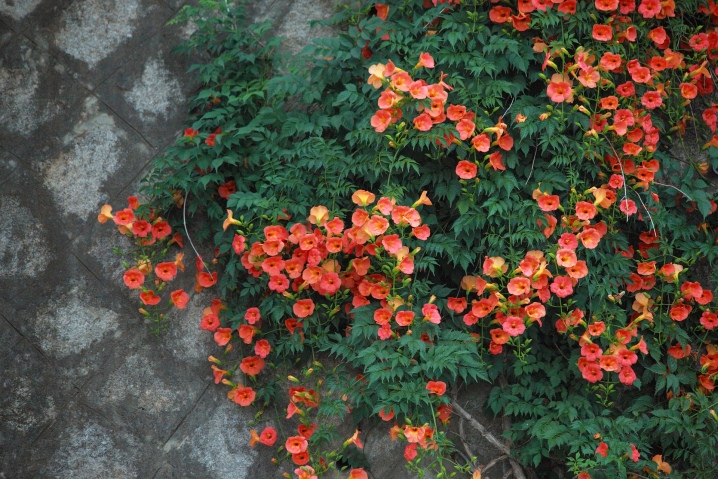
- Top dressing. If the soil on which you are planting the seedling is fertile, then the plant may not be fertilized at all.
It is worth using nitrogen-phosphate complex mineral supplements during the flowering period - top dressing contributes to its duration and abundance.
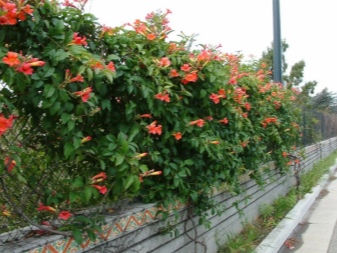
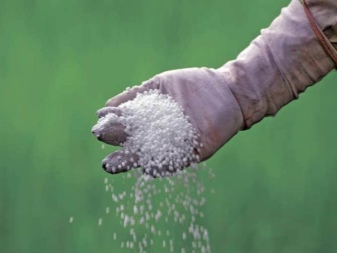
- Pruning. Campsis is a plant that grows very quickly and needs to be pruned regularly. In spring, old and dry shoots are pruned, this stimulates the growth of new branches. During the flowering period, a bud that has already bloomed can be cut off. Already in late autumn, a major pruning is carried out so that the vine does not grow beyond your territory.

- Wintering. Several times in the article, we said that the vine is thermophilic and does not react well to frost. That is why it is necessary to prepare a shelter for the winter. If you cover the base of the Kampsis with foliage or sawdust, and wrap the branches on the supports, for example, with plastic wrap, wintering will be easy - the plant will not suffer.
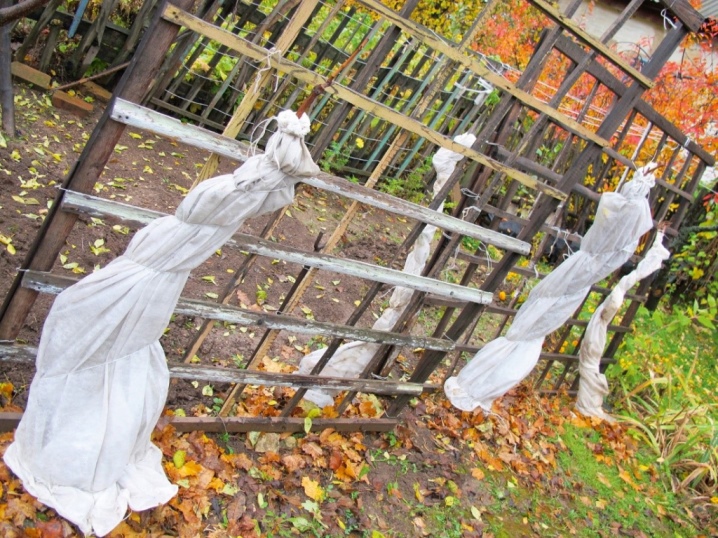
Adhering to these rules, you will ensure that the plant will feel great in the Moscow region, grow well and bloom profusely.
Possible problems
This perennial vine is very resistant and practically not exposed to diseases and attacks of various pests. Here are some of the troubles that can happen to Kampsis.
- Decay of the root system - this can only happen if the watering rules are violated. If such a situation occurs, do not panic and resort to extreme measures. All you need to do is change, reduce watering.
- Aphid appeared - it is this parasite that can attack kampsis during the flowering period. But this is not a big deal either. You can get rid of aphids with the help of special preparations that are sold at specialized points of sale. Just by following the instructions, it is worth preparing the solution and spraying the plant. But you can also prevent the appearance of these uninvited guests - spraying in June.
- Campsis does not bloom. There may be several reasons for this trouble (the flower was attacked by parasites; it was a rather cold and frosty winter, which damaged the plant; the soil on which the flower was planted was not fertile enough).
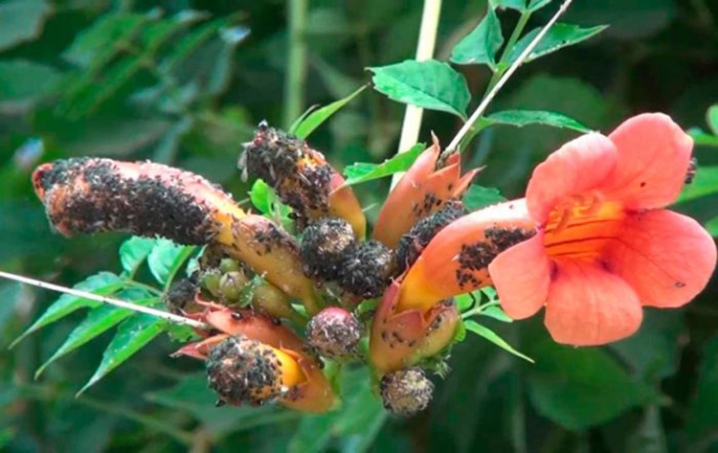
To ensure abundant flowering, it is necessary to prevent the appearance of parasites, to insulate the plant for the winter. If the soil is infertile, it is worth performing a complex for applying fertilizers - both mineral and organic.
For more on growing kampsis, see the next video.



































































The comment was sent successfully.